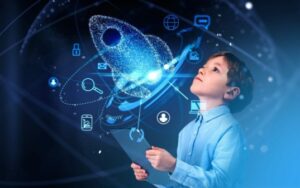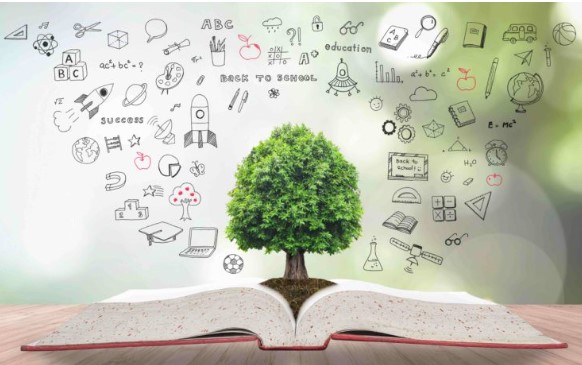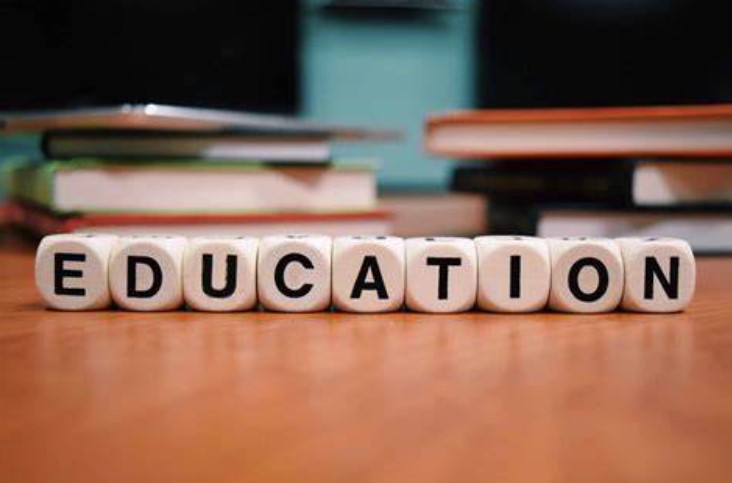The New Age of Education by freegame24.xyz
An Introduction to Contemporary Education
In the 21st century, education has undergone a significant transformation, moving away from traditional methods toward a more holistic and flexible approach. Today’s educational landscape focuses not only on academic achievement but also on developing essential life skills that prepare students for a complex, interconnected world. This shift is driven by the need to produce well-rounded individuals who can think critically, solve problems creatively, and adapt to ever-changing environments.

One of the most notable changes in contemporary education is the emphasis on student-centered learning. Unlike the old model, which often relied on a one-size-fits-all curriculum, modern education prioritizes the individual needs and interests of each student. This approach allows learners to take an active role in their education, fostering a deeper understanding and greater retention of knowledge. By encouraging students to explore subjects that interest them, educators can ignite a passion for learning that lasts a lifetime.
Another significant element is the integration of interdisciplinary studies. Recognizing that real-world problems do not exist in isolation, contemporary education breaks down the barriers between subjects to provide a more comprehensive learning experience. Students are encouraged to draw connections between different fields of study, promoting a more profound understanding of how various disciplines interact and influence one another. This interdisciplinary approach helps students develop a more versatile skill set, better equipping them for the diverse challenges they will face in their careers and personal lives.
The role of educators has also evolved in this new age of learning. Teachers are no longer just dispensers of knowledge; they are facilitators and mentors who guide students on their educational journeys. This change requires educators to adopt new teaching strategies and continually update their skills to remain effective in a rapidly evolving educational landscape. Professional development opportunities and collaborative learning communities play a crucial role in helping teachers adapt to these new demands.
Parental involvement is another critical factor in contemporary education. When parents actively participate in their children’s learning experiences, it creates a supportive environment that reinforces the importance of education. Schools and educators are increasingly seeking ways to engage parents through regular communication, workshops, and volunteer opportunities, ensuring that learning extends beyond the classroom walls.
Technology’s Influence on Education
Technology’s Influence on Education
Technology has significantly reshaped the educational landscape, offering new avenues for learning and teaching. Interactive tools have replaced traditional methods, making lessons more dynamic and engaging. Smartboards, for example, allow teachers to present information visually and interactively, enhancing student participation. Educational apps cater to various subjects and skills, enabling personalized learning experiences tailored to individual student needs. Virtual reality (VR) has emerged as a powerful tool, allowing students to explore historical sites, conduct scientific experiments, or even dive into complex mathematical problems in an immersive environment.
Online resources have also played a crucial role in transforming education. Platforms offering video lectures, e-books, and interactive exercises provide students with a wealth of information at their fingertips. This accessibility ensures that learning is not confined to the classroom and can happen anytime, anywhere. Digital libraries and databases offer vast repositories of information, making research more efficient and comprehensive. These resources cater to different learning styles, whether visual, auditory, or kinesthetic, ensuring that each student can engage with the material in a way that suits them best.
The rise of online learning platforms has further expanded educational opportunities. Courses from top universities and institutions are now available to anyone with an internet connection. This democratization of education allows students from all backgrounds to access high-quality learning materials and gain new skills. It also offers flexibility, as learners can study at their own pace and schedule, balancing education with other commitments.
Artificial intelligence (AI) and machine learning are also making their mark on education. AI-powered tools can assess student performance in real-time, providing instant feedback and identifying areas that need improvement. This allows for more targeted and effective teaching strategies, addressing individual student needs more precisely. Additionally, AI can help create adaptive learning environments that adjust the difficulty and type of content based on the learner’s progress.
Collaboration has also been enhanced through technology. Digital platforms enable students and teachers to communicate and collaborate seamlessly, regardless of geographical barriers. Tools such as video conferencing, shared documents, and virtual classrooms foster a collaborative learning environment, encouraging teamwork and communication skills. These technological advancements are not just enhancing the way students learn but also preparing them for a future where digital literacy is essential.
Tailored Learning Opportunities
Tailored learning opportunities are transforming how education is delivered, providing personalized experiences that cater to each student’s unique needs and abilities. By leveraging advanced technologies and innovative teaching methods, educators can create customized learning pathways that optimize student engagement and achievement.
One of the key components of this personalized approach is the use of adaptive learning platforms. These platforms employ data analytics to monitor student progress, identify strengths and weaknesses, and adjust content accordingly. This ensures that each student receives the support and challenges they need to succeed. For example, a student struggling with math might be directed to additional practice problems, while a student excelling in the same subject could be provided with more advanced material to keep them engaged.
Moreover, tailored learning opportunities extend beyond academic subjects to include social and emotional development. Recognizing that students have diverse interests and learning styles, educators are incorporating a variety of activities and resources to address these differences. Project-based learning, for example, allows students to explore topics they are passionate about, fostering a deeper connection to the material and encouraging critical thinking and problem-solving skills.
Additionally, the integration of technology in tailored learning enables a more interactive and engaging educational experience. Tools such as virtual simulations, interactive games, and digital storytelling can make learning more dynamic and enjoyable. These technologies not only cater to different learning preferences but also help students develop digital literacy skills that are essential in today’s world.
Teacher-student relationships play a crucial role in the success of tailored learning. Educators act as guides and mentors, providing personalized feedback and support to help students navigate their educational journeys. This individualized attention can significantly boost student confidence and motivation, leading to better academic outcomes.

Furthermore, tailored learning opportunities promote a growth mindset, encouraging students to view challenges as opportunities for growth rather than obstacles. By focusing on individual progress and celebrating small victories, educators can help students build resilience and a lifelong love of learning.
The benefits of tailored learning extend beyond the classroom, preparing students for the complexities of the modern world. By equipping learners with the skills and knowledge they need to thrive, personalized education paves the way for a more adaptable and innovative future.
Challenges and Possibilities
In the evolving landscape of education, several challenges must be addressed to ensure equitable learning opportunities for all students. One significant issue is the digital divide, where disparities in access to technology and internet connectivity create uneven learning experiences. While many schools have integrated advanced technological tools, not all students benefit equally due to varying levels of access at home. This gap can hinder the educational progress of students who lack the necessary resources, making it crucial to find solutions that provide all learners with equal opportunities.
Balancing the use of technology with traditional educational methods presents another challenge. While digital tools offer interactive and engaging learning experiences, it is essential to integrate hands-on activities that promote creativity, critical thinking, and social interaction. Relying too heavily on screen-based learning can lead to decreased physical activity and social skills development, highlighting the need for a balanced approach that incorporates both digital and offline learning experiences.
Teacher preparedness is also a critical factor in the successful implementation of modern educational practices. Educators must continually update their skills and adapt to new technologies and methodologies. This requires ongoing professional development and support systems to ensure teachers can effectively navigate the changing educational landscape. Providing educators with the necessary training and resources can empower them to create more dynamic and inclusive learning environments.
Another challenge lies in addressing the diverse needs of students. With increasing recognition of different learning styles and abilities, it is essential to create an inclusive educational system that accommodates all students. This involves developing personalized learning plans and providing additional support for those with special needs or learning difficulties. Ensuring that all students receive the attention and resources they need to thrive is a fundamental aspect of equitable education.
Finally, fostering collaboration between educators, parents, and communities is essential for overcoming these challenges. By working together, stakeholders can create a supportive network that enhances the learning experience for students. Open communication and shared goals can lead to innovative solutions and a more cohesive approach to education, ultimately benefiting all learners.
Envisioning Future Learning Environments
Classrooms of the future must be designed to meet the diverse needs of students and educators, emphasizing flexibility, adaptability, and innovation. These spaces should support various teaching methods and learning styles, allowing for seamless transitions between individual work, group projects, and class-wide discussions. Furniture that can be easily rearranged and modular seating options will enable educators to create dynamic layouts tailored to different activities and learning objectives.
Technology will play a pivotal role in shaping these future learning environments. Interactive displays, tablets, and other digital tools should be integrated into the classroom to enhance the learning experience. These technologies can provide real-time feedback, support collaborative projects, and offer access to a wealth of online resources. Additionally, incorporating augmented reality (AR) and virtual reality (VR) can create immersive learning experiences, allowing students to explore new concepts in a hands-on and engaging manner.
A key aspect of future classrooms is the incorporation of collaborative spaces. Designated areas for group work and brainstorming sessions will foster teamwork and communication skills. These spaces should be equipped with writable surfaces, such as whiteboards and smartboards, to facilitate idea sharing and problem-solving. By creating environments that encourage collaboration, students can develop the skills needed for the modern workforce.
In addition to physical design, the atmosphere of future learning environments should be conducive to creativity and exploration. Natural light, comfortable seating, and access to outdoor spaces can create a more inviting and stimulating environment. By prioritizing student well-being, these classrooms can enhance focus and motivation, leading to better learning outcomes.
Future learning environments should also be inclusive, providing resources and accommodations for students with diverse needs. Accessibility features such as adjustable desks, assistive technology, and sensory-friendly spaces can ensure that all students have equal opportunities to succeed. By considering the diverse needs of the student population, educators can create classrooms that are welcoming and supportive for everyone.
Ultimately, envisioning future learning environments involves rethinking traditional classroom designs and embracing innovative approaches that foster engagement, collaboration, and inclusivity.
The Significance of Continuous Learning
In today’s fast-paced world, the importance of continuous learning is more critical than ever. As industries evolve and new technologies emerge, staying updated with the latest knowledge and skills becomes essential for both personal and professional growth. Continuous learning enables individuals to remain competitive in the job market and opens up new opportunities for career advancement.
One significant aspect of continuous learning is its ability to foster adaptability. As job roles change and new challenges arise, those who engage in lifelong education are better equipped to navigate these shifts. This adaptability not only benefits individuals but also organizations that rely on a skilled and agile workforce to stay ahead in a competitive landscape.
Moreover, continuous learning promotes intellectual curiosity and personal fulfillment. By exploring new subjects and acquiring diverse skills, individuals can pursue their passions and interests beyond their primary field of work. This holistic approach to learning enriches personal lives and contributes to overall well-being.
Various avenues exist for continuous learning, including online courses, professional workshops, and community seminars. These platforms offer flexible learning options, allowing individuals to balance education with other commitments. Additionally, many organizations provide resources and support for employee development, recognizing the value of a well-trained and knowledgeable workforce.
The significance of continuous learning extends to fostering a culture of innovation. When individuals are encouraged to seek new knowledge and challenge the status quo, they contribute to a dynamic and forward-thinking environment. This culture of innovation drives progress and helps address complex global issues, ultimately benefiting society as a whole.
In conclusion, continuous learning is vital for staying relevant in an ever-changing world. By embracing lifelong education, individuals and organizations can thrive, innovate, and contribute positively to the broader community.



